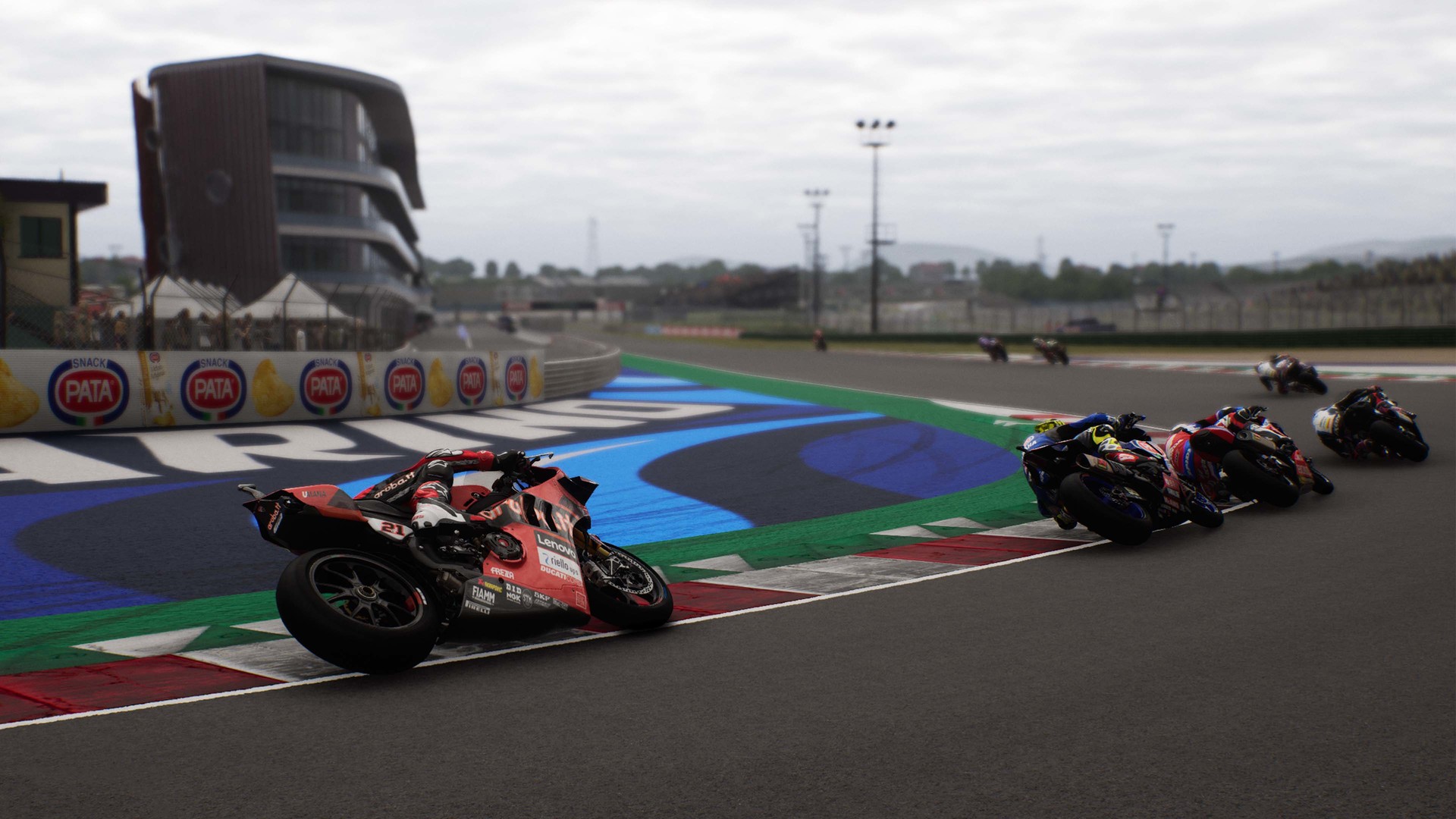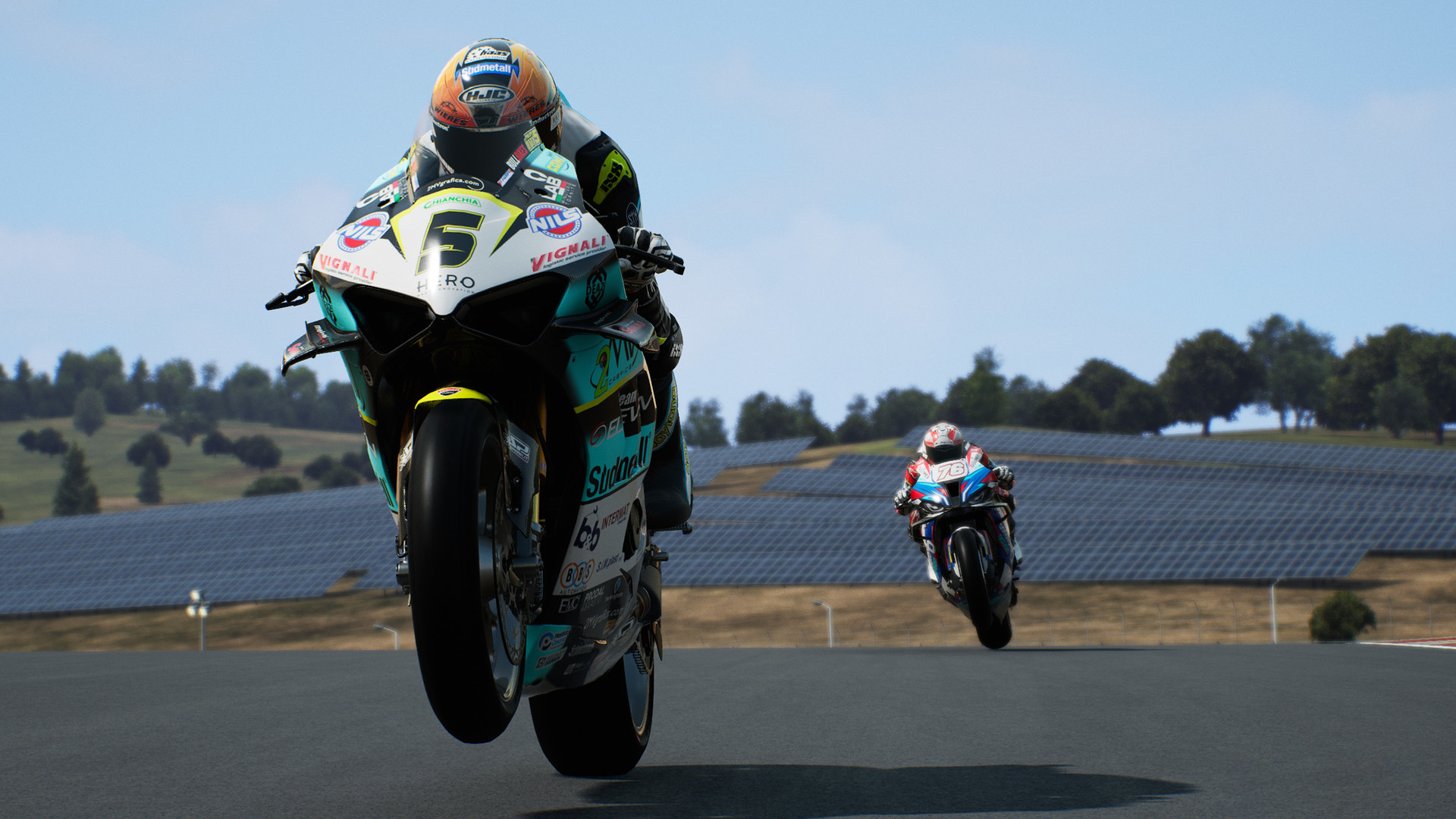It’s fair to say that there’s no shortage of quality racing games on the market today. Games like Forza Horizon or GRID bring a more arcadey driving ecosystem, while games like Codemasters’ venerable F1 series lean more toward simulations, both in driving and in structure. The world of superbike racing games is a bit sparser, and developer Milestone is at the forefront of bike games across series like RIDE and MotoGP. For the Superbike World Championship, SBK 22 takes a more simulation-focused approach and lets you race with the real drivers and on some of the real tracks in the sport. Frequently, though, SBK 22 doesn’t strike the right balance between simulation and enjoyability. While it’s satisfying to hit a turn perfectly or overtake a pesky rival, it’s just as frustrating in its steep learning curve and lack of modes. For fans of the sport, SBK 22 will give you what you’re looking for, but beyond that, it doesn’t hold its weight in a genre that’s filled with stronger competitors.
SBK 22 is another motorbike racing entry from Milestone, reviving a SBK series that has been dormant for nearly a decade since 2012’s SBK Generations. Milestone has remained busy with its other bike racing series, though, and SBK 22 feels at times like another entry without too much differentiation. Of course, SBK 22 is the official game of the Superbike World Championship, so like the F1 games, you have access to all of the sport’s biggest drivers and many of its tracks, and its main mode is a career mode that lets you manage a custom team entering the championship.
“For fans of the sport, SBK 22 will give you what you’re looking for, but beyond that, it doesn’t hold its weight in a genre that’s filled with stronger competitors.”
The career mode actually takes a lot of inspiration from F1’s career mode in a lot of ways. You’re put in charge of your team’s management, controlling every aspect off the track from research and development to the team member contracts to the team colors and designs. In fact, there really isn’t much here that isn’t ripped from F1’s structure, even down to the UI, but it’s unfortunately much less deep than its counterpart. There aren’t too many upgrade decisions to be made within R&D, as there is a clearly linear path within each division, and the contracts themselves usually boil down to choosing between two or three options that offer opposing flavors of risk and reward. There’s also very little in the way of a storyline or continuity, so it’s not as much a career story as it is a traditional franchise mode.
On the track, though, things get a little more interesting. Each weekend of races can have up to 8 sessions, including multiple practice rounds alongside the Tissot Superpole and the races themselves. These are to help you get to know the tracks in detail in the same way the real drivers do. You can change your driver’s bike stance and choose to an extent how much of your bike you want to control, as well as adjust the tire types and amount of fuel put into the bike. These all help you marginally improve your driving ability, but it’s the ability to successfully navigate the track that’s most vital. Turning is an art of speed, angle, and weight distribution, and knowing where each turn is, how to approach it, and how to come out of it are essential to any sort of success in each race. It really doesn’t get old to watch your driver go seemingly parallel to the ground to make a tight turn successfully.
“Turning is an art of speed, angle, and weight distribution, and knowing where each turn is, how to approach it, and how to come out of it are essential to any sort of success in each race. It really doesn’t get old to watch your driver go seemingly parallel to the ground to make a tight turn successfully.”
Unfortunately, getting to this point becomes less of a learning exercise and more of a frustrating slog. Making tight and accurate turns is one of the most important aspects of the sport, and the game does very little to help you get better at them. It’s certainly possible to run through each track dozens of times to memorize each segment, but the time needed to do this is far too high for how tedious the task can become. Until you’re a master at the craft, you’re likely going to use some form of driver assists, but they are woefully unhelpful. The camera angle has a nasty habit of masking upcoming turns, and the auto braking and ideal trajectory lines are less than perfect. It took me hours of getting my teeth kicked in, crashing repeatedly, and frequently finishing last to even get a hint of improvement, and there’s very little in the way of support the game will provide you. I found myself using the rewind feature constantly, making every turn a guessing game rather than one of skill. Two-minute laps commonly doubled that when accounting for rewind time, and when I started to find more success, it was more of a feeling of relief than of satisfaction.
Over time, you definitely get a better sense of each track, but really only because there isn’t much to learn. There are only 12 tracks, and after a while they do start to blend together, as they all look and feel mostly the same, with a few twists thrown in here and there. The tracks themselves, alongside the rest of the game, are certainly beautiful. There’s great lighting on the track that changes depending on time of day and weather, though this sometimes also gets in the way of your track vision. The bikes themselves sound amazing, too, and Milestone has certainly pulled in the best of their recent work on the physics. Your ability to turn changes based on your speed and trajectory into a turn, making you focus on finding the sweet spot between accelerating into a turn and making sure you don’t crash, despite how entertaining the crashes can be.
“Over time, you definitely get a better sense of each track, but really only because there isn’t much to learn. There are only 12 tracks, and after a while they do start to blend together, as they all look and feel mostly the same, with a few twists thrown in here and there.”
I spent the vast majority of my time in SBK 22 in the career mode, primarily because there isn’t much else to see. During my time for review, there was no access to SBK 22’s multiplayer modes, though these seem like your standard online races and championships. Aside from that, the only other game mode is the standard quick race exhibitions. It’s a surprisingly small catalog of modes for a game that seems like it could hold up some other ways to play. The career mode itself isn’t necessarily shallow, nor would I recommend putting your time in another mode, but it quickly gets to a point where you will have seen everything the game has to offer.
SBK 22 is an interesting return for a franchise that’s been gone for so many years, as it seems to combine the gameplay from Milestone’s other motorcycle racing games with the simulation focus and structure of other racers on the market, specifically the F1 series. Unfortunately, this all puts SBK 22 in an odd, underbaked place. Its lack of content outside of the so-so career mode means that there isn’t much content to see. Its gameplay is highly rewarding at very specific moments of success, but the time to get there can be frustratingly long and slow. It’s a beautiful game and one that gets that much more fun when you’re that much better, but for anyone who isn’t a superfan of the sport, there are other games on the market that might cater better to your tastes without the same learning curve and tedium. It’s not a bad game by any stretch, but its lack of deep content and steep learning curve make it difficult to recommend to the casual racing fan.
This game was reviewed on the PlayStation 5.
SBK 22 Review – Defying Physics
Source: News Beginning



0 Comments